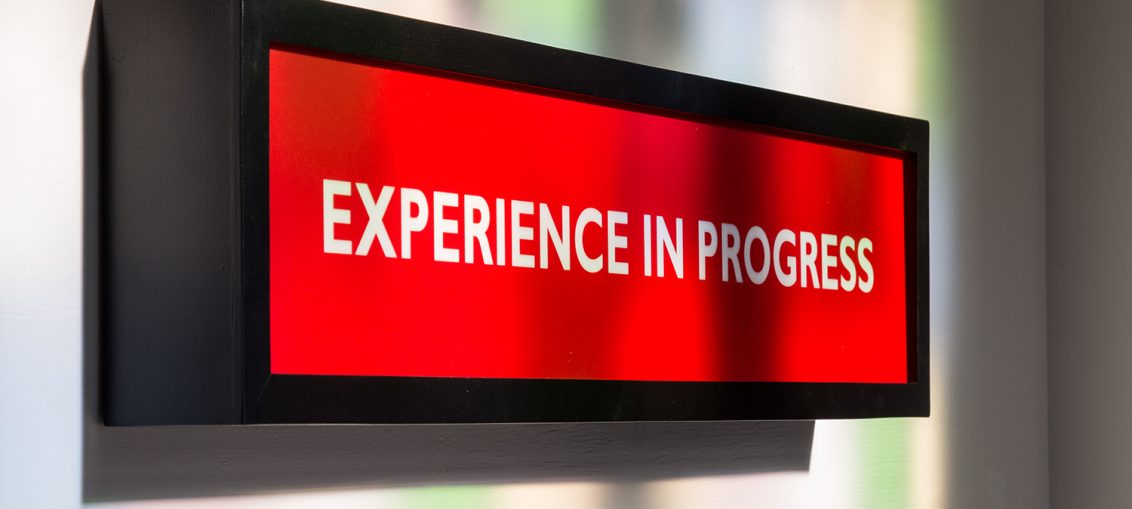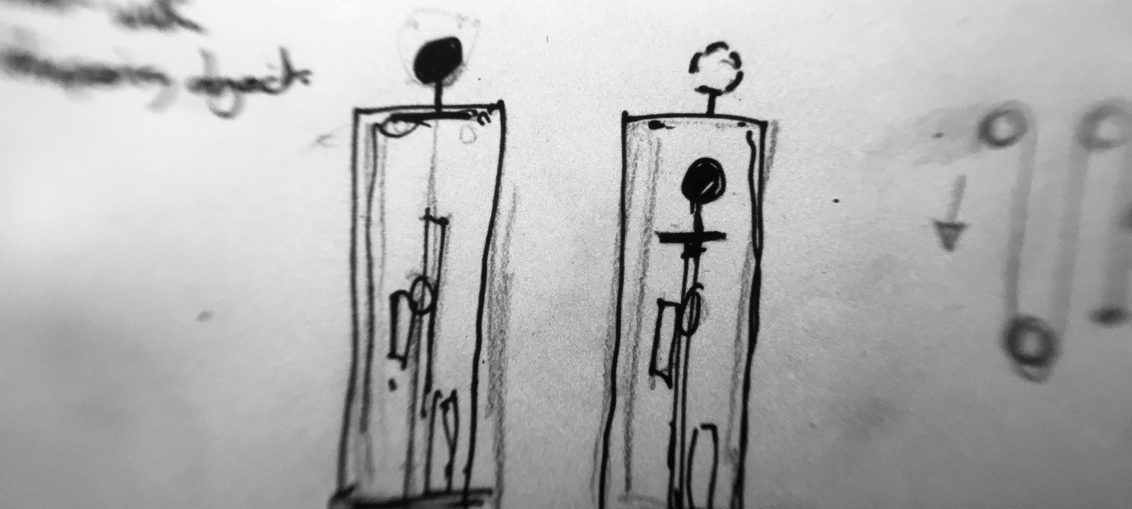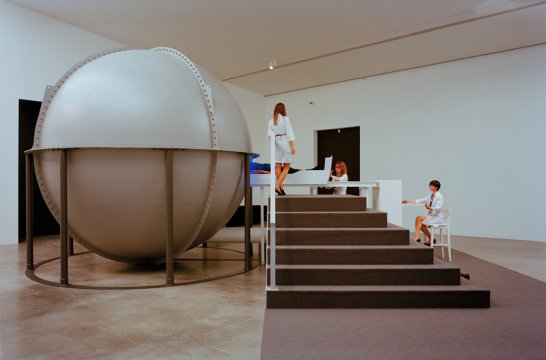Experience in Progress, Light box at Abingdon Studios, Blackpool 2022 View this post on Instagram A post shared by Antony Hall (@tonazoid)
Tag: installation
Plinth with unseeable object
I was honoured to be invited to contribute to WEDDING RITUAL an amazing curatorial project by Wes White / Wes Viola. I wrote about something Old [Plinth with unseeable object] Did something new [See the obscurist edition], proposed something borrowed and invented something blue [sort of]. "...Antony Hall is an extraordinary artist, experimentalist and thinker. His work frequently plays with our perception of reality, sometimes presenting as everlasting magic tricks (for example, his Perpetual Coffee Vortex and Continual Slow Drip). Hall is also one part of Owl Project, the sound-art collective responsible for the iLog, at least one incarnation of which Bjork is rumoured to have added to her collection of instruments. The ENKi project explored the limits of human interaction with electric fish. I was fortunate to study at Strode College with Tony (on the course now led by Duncan Cameron, then our sculpture tutor), and have followed his artistic
Carsten Holler / Olafur Eliasson
Carsten Holler is a key example within this study, often re- appropriating science for the purposes of art. Staging ‘Quasi-scientific’ experiments (Windsor, 2018) which transform the gallery into a laboratory. Often disorientating the viewer, or more appropriately, the participant. As well as the large-scale installations smaller performative works such as ‘Kit for Exploration of the Self’ (Carsten. Holler, 1995) take the form of durational perception changing instruments such as ‘Upside Down Glasses’ (Carsten Holler, 1994-2018). These both directly re-appropriate methods from experimental psychology (Stratton, 1896). Many of the works require the participant to travel through them or offer the opportunity to make decisions of which there are no return or unknown outcomes, further reinforcing this active notion of experience as
Augmented hands
‘Augmented hand series’ by Golan Levin, Chris Sugrue, and Kyle McDonald, 2013-2015) ‘MIRAGE Illusion Box’ (Roger Newport, 2008) These are two very similar projects which both transform the image of a hand in real time using Augmented Virtuality (AV, the digital manipulation of real-world objects). Both take the form of a black box, into which the hand is placed. When inside the participant can see their hand as if looking through a window into the box. Inside the box, a system of mirrors and motion tracking is used. An augmented or distorted digital image of the hand is relayed to a screen on the top of the box. Despite the technical similarities, both works stem from entirely different motivations. The ‘MIRAGE Illusion Box’ (Newport, 2018)
Be Another Lab
This International group interdisciplinary group adopt mechanisms employed in the cognitive sciences, such as the work of Mel Slater, and the arts. Their project ‘The Machine to Be Another’ allows anyone to experience a perspective from the body of an-other. The group speak of ‘expanding subjective experience’ and ‘understanding the relationship between identity and empathy from an embodied perspective’ (http://beanotherlab.org/) Using HMDs and live video, they have developed a number of critical applications. Investigating a wide range of issues including gender and disability. The group study the impact this work can have on people’s lives, employing methods of action research and co-creation. Be Another Lab embraces an open source approach. Sharing and developing their project through workshops, making the tools and
Strange face illusion with two-way Mirror feedback
“… a quiet room dimly lit by a 25 W incandescent light. The lamp was placed on the floor behind the observer so that it was not visible either directly or in the mirror. A relatively large mirror (0.5 m60.5 m) was placed about 0.4 m in front of the observer. The luminance of the reflected face image within the mirror was about 0.2 cd mÿ2 and this level allowed detailed perception of fine face traits but attenuated colour perception…The task of the observer was to gaze at his/her reflected face within the mirror. Usually, after less than a minute, the observer began to perceive the strange-face illusion…” Giovanni B Caputo, Perception, 2010, volume 39, pages 1007 – 1008 2010
Mechanically Augmented Reality
When I first learned about the Rubber hand illusion [RHI] I immediately began to think about ways in which the process could be automated to create an artwork, in which the experimenter's presence was removed. This could be done using sensors and a microcontroller to articulate solenoids to tap fingers for example. That thought train was on a back burner until discovered the work of fellow MMU PGR Lin Charlston. As part of her PhD research [See her profile here 'The Multimodal book as organism, artefact and assemblage: non-human agency in processes of growing and making'] She invented a beautifully simple, entirely mechanical device just to do exactly this. Your hand is placed inside a box, while the other hand turns a crank. On top of the box, another rubber hand
James Turrel – Light Reignfall
[vimeo 75419053 w=640 h=360] James Turrell's Light Reignfall @LACMA - Andrew van Baal James Turrell's Light Reignfall Light Reignfall is a work from his series of perceptual cells, inside the participant is exposed to a uniform homogenous field of modulated light. A combination of sensory overstimulation, yet deprived of recognisable forms or space, hallucinatory effects are experienced. “Assisted by an attendant, an individual viewer enters a spherical chamber on a sliding bed. A program of saturated light (operated by a technician) surrounds the viewer for twelve minutes, allowing the visitor to experience the intense, multi-dimensional power of light and the complex seeing instrument of the human eye.” "James Turrell (b. 1943, Los Angeles), a key artist in the Southern California Light and Space movement
Enki Manchester Science Museum
Some of the early experiments for the Enki project at Museum of Science and Technology Manchester 2007... We recorded brainwave data and monitored the behaviour of the electric fish during the experiment. The electrical activity of the fish is experienced as sound and light via ENKI (a stroboscopic high frequency led placed close to eyelid) and the natural binaural frequencies produced by the interaction and communication between Black Ghost Knife fish. The participant's bio-electric field was connected to the aquarium allowing the fish to sense a human (bio)electric image or presence. Museum of Science and Industry Manchester, 7th October 2006
ENKI exhibition at Kapellica Gallery
10/2012– 01/2013 Enki [Solo show] Kapellica Gallery, Ljubljana, Slovenia Enki experiment 5 Possibly the final showing of the ENKI project ENKI is a series of experiments in bio-interfacing between humans and certain types of Electrogenic Fish .. Ultimately this is achieved through psycho-acoustic audio and visual entrainment as a means of modulating human emotional state. During this process, bio-electrical activity is monitored and used as a means to create a feedback loop between organisms. The research aims to study the interaction between tiny bio-electrical fields of both species [human and fish] specifically the way in which these fields modulate and the means of controlling them. It also aims to discover if it is possible to create a harmonious state of interaction that can




